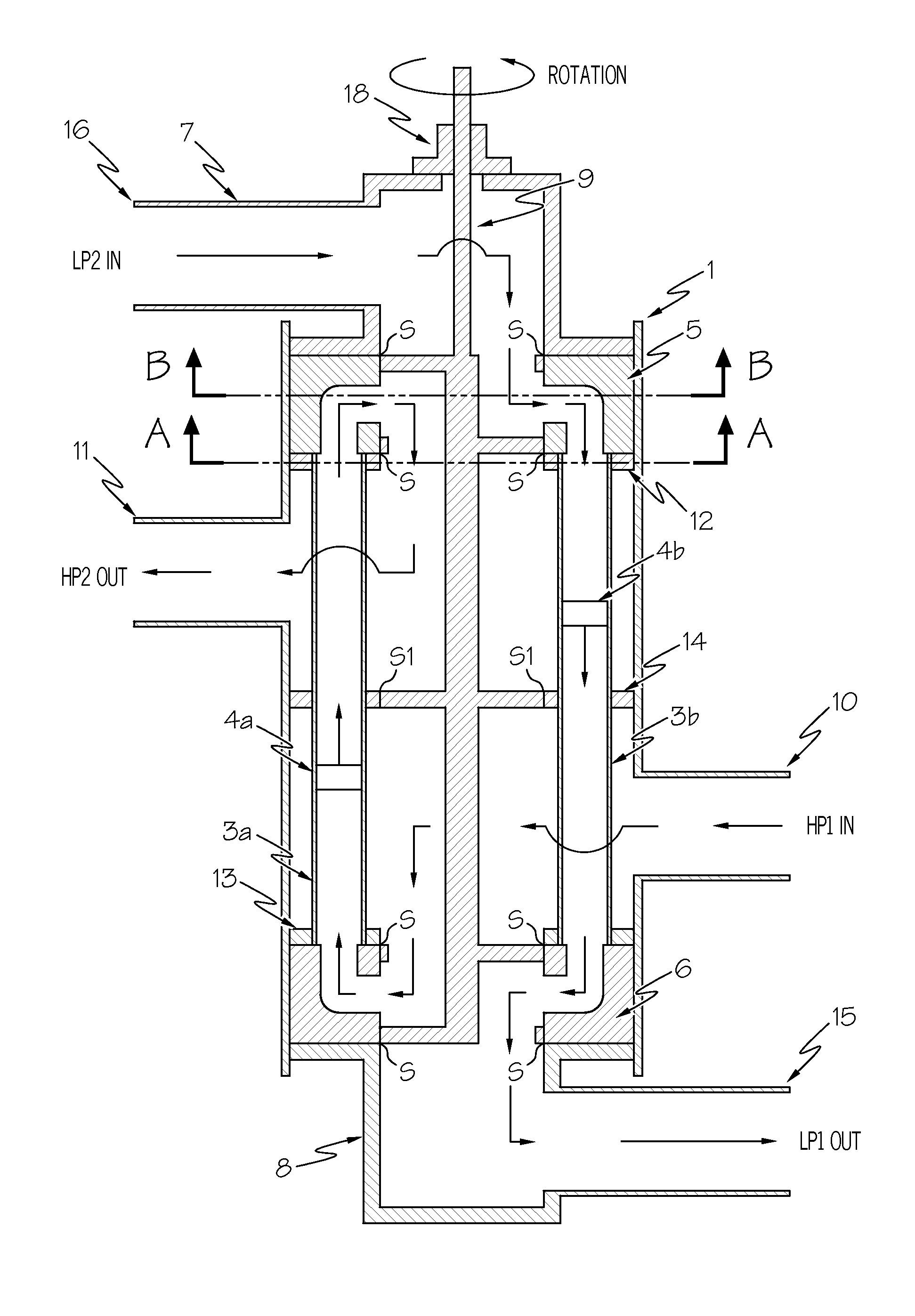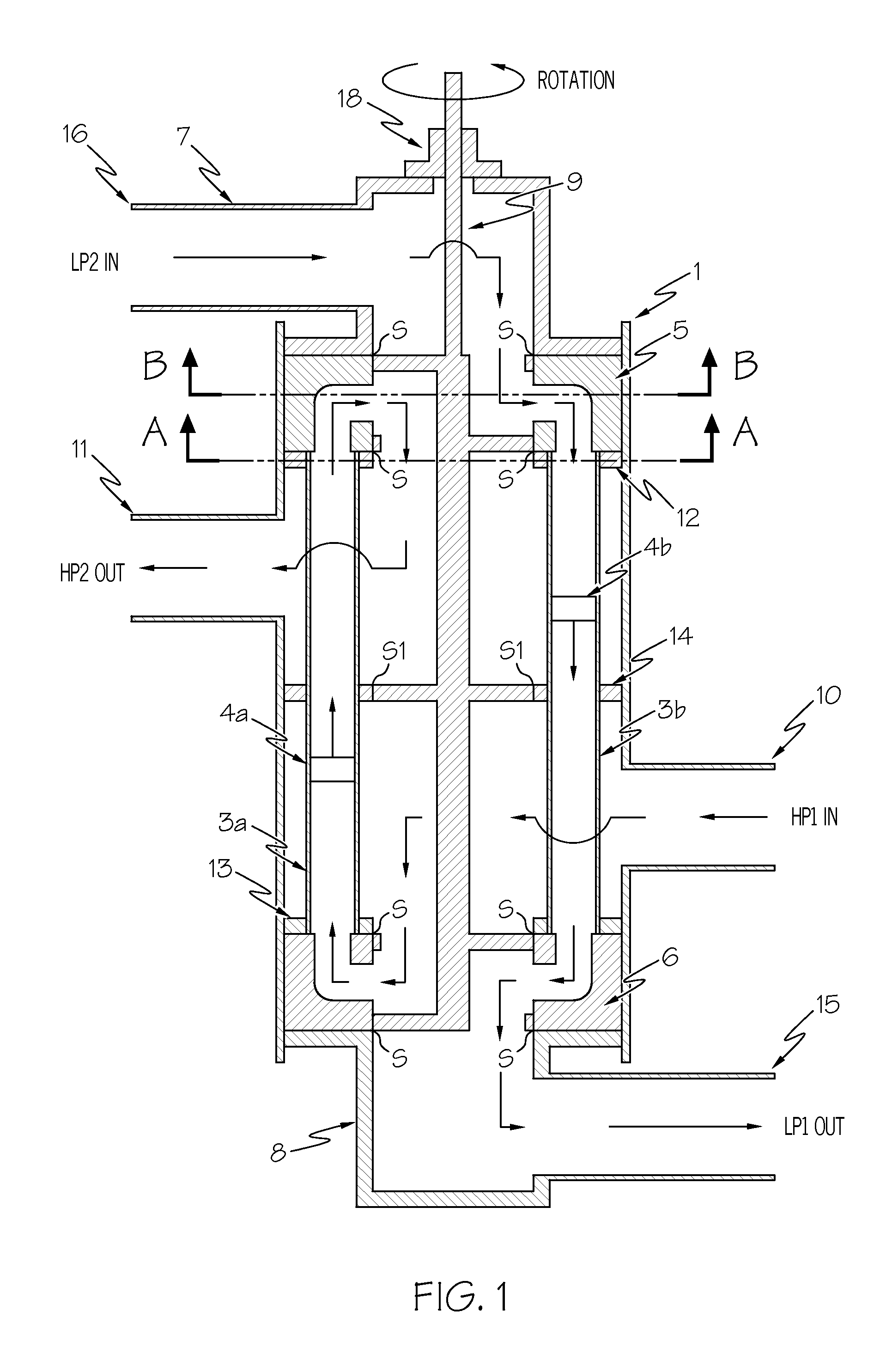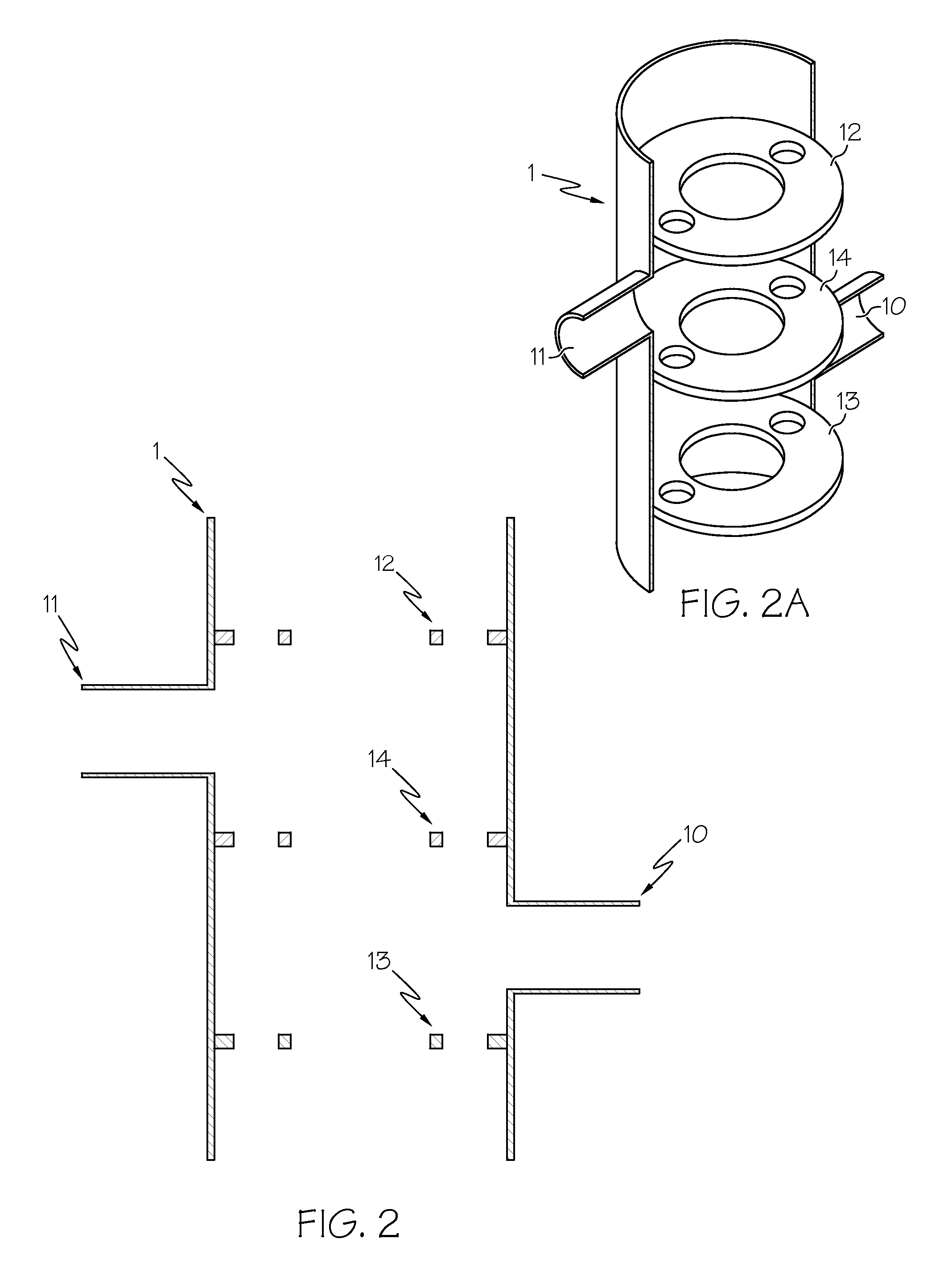Pressure exchanger
a technology of pressure exchanger and rotor, which is applied in the direction of hot gas positive displacement engine plants, piston pumps, pump components, etc., can solve the problems of reducing efficiency, reducing efficiency, and increasing the energy consumption of continuous flow operations, so as to achieve efficient transfer and improve efficiency. the effect of economy
- Summary
- Abstract
- Description
- Claims
- Application Information
AI Technical Summary
Benefits of technology
Problems solved by technology
Method used
Image
Examples
Embodiment Construction
[0051]Referring first to FIG. 1, a simplified embodiment of the pressure exchange machine in accordance with the present invention is generally shown.
[0052]A pressure vessel 1 is provided with a first port 10 acting as a high pressure inlet of a first stream (“HP1 in”) and a second port 11 acting as a high pressure outlet (“HP2 out”). The pressure vessel 1, shown in more detail in FIGS. 2 and 2a, includes three septum plates 12-14 attached thereto. The septum plates 12 and 13 are located towards either end of the vessel 1, and the plate 14 is located towards its centre.
[0053]The three septum plates 12-14 of the pressure vessel 1 are bored out in substantially the same configuration as shown in FIG. 3, which shows the section A-A of FIG. 1. FIG. 3 also shows the two exchange ducts 3a and 3b, which are arranged around the outer ring of the septum plates.
[0054]Referring again to FIG. 1, duct pistons 4a and 4b are provided in the exchanger ducts 3a and 3b, respectively, to reduce mixing...
PUM
 Login to View More
Login to View More Abstract
Description
Claims
Application Information
 Login to View More
Login to View More - R&D
- Intellectual Property
- Life Sciences
- Materials
- Tech Scout
- Unparalleled Data Quality
- Higher Quality Content
- 60% Fewer Hallucinations
Browse by: Latest US Patents, China's latest patents, Technical Efficacy Thesaurus, Application Domain, Technology Topic, Popular Technical Reports.
© 2025 PatSnap. All rights reserved.Legal|Privacy policy|Modern Slavery Act Transparency Statement|Sitemap|About US| Contact US: help@patsnap.com



